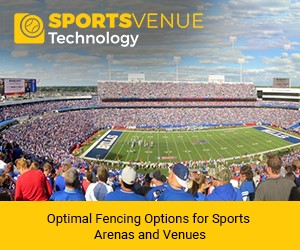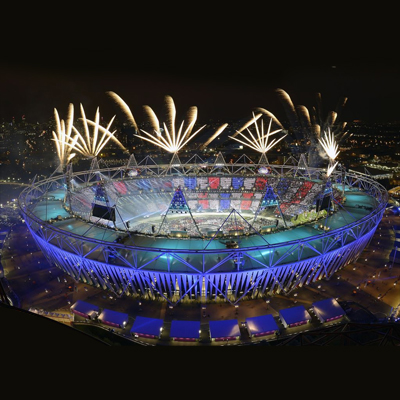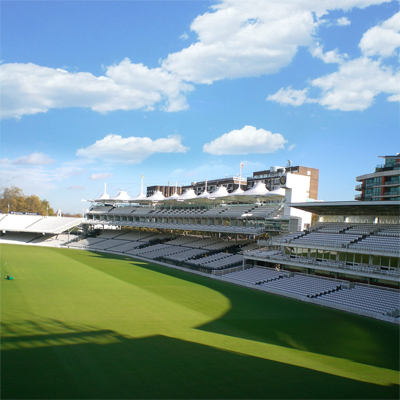Optimal Fencing Options for Sports Arenas and Venues

Introduction:
When designing and constructing sports arenas and venues, the selection of optimal fencing options for sports arenas and venues is a critical consideration. These venues host a variety of athletic events, from intense team sports to individual competitions, making safety, security, and aesthetics paramount. The right choice of fencing not only demarcates boundaries but also enhances security measures, minimizes potential hazards, and contributes to an immersive event experience for participants and spectators alike.
Key Considerations for Optimal Fencing:
Security and Safety: The primary purpose of optimal fencing options for sports arenas and venues is to provide heightened security and safety. A well-designed fence should effectively deter unauthorized access while safeguarding spectators from entering restricted areas. The use of robust materials, appropriate height, and secure locking mechanisms are crucial elements in achieving these objectives.
1. Visibility: Fencing should not hinder the sightlines for spectators. Optimal fencing options for sports arenas and venues can include transparent or mesh-style materials that strike a balance between maintaining visibility and ensuring safety. This enables attendees to fully enjoy the event while maintaining security protocols.
2. Durability: Durability is key in optimal fencing options for sports arenas and venues due to frequent use, exposure to various weather conditions, and potential impacts from sports equipment. Materials such as steel, aluminum, or specialized sports-grade polymers can provide the necessary durability, requiring minimal maintenance over time.
3. Flexibility and Adaptability: The dynamic nature of sports venues necessitates fencing systems that can be easily reconfigured to accommodate different event setups. Modular fencing options with interlocking panels or portable barriers offer the flexibility required to create optimal configurations for various events.
4. Player and Spectator Interaction: For certain sports like basketball and ice hockey, fostering interaction between players and spectators can be a significant aspect of the event. Incorporating designated interaction zones or transparent partitions within the fencing structure can enhance overall fan engagement.
6. Noise Control: Some sports generate considerable noise, potentially causing disturbances in neighboring areas. Acoustic fencing solutions within optimal fencing options for sports arenas and venues can effectively mitigate noise pollution, making the venue more considerate of its surroundings.
7. Aesthetics: The visual aspect of fencing should align with the venue's architecture while meeting security requirements. Optimal fencing options for sports arenas and venues may include customizable features such as color choices or integration of branding elements, enhancing the overall visual appeal.
8. Accessibility: To ensure inclusivity, fences must be designed with accessibility in mind. The incorporation of sufficient gates and entrances for players, officials, and individuals with disabilities is a vital component of creating an accessible sports environment.
| Also Read: ESports Arenas: The Rise of Dedicated Gaming Venues |
9. Regulatory Compliance: Compliance with specific regulations regarding fencing height, materials, and safety features is essential. Adhering to these regulations ensures the well-being of all stakeholders and helps prevent legal issues in optimal fencing options for sports arenas and venues.
Common Fencing Options:
1. Chain Link Fencing: As a cost-effective solution, chain link fencing is considered one of the optimal fencing options for sports arenas and venues. Its ability to provide security and visibility, along with customizable color coatings, makes it a versatile choice.
2. Welded Mesh Panels: These panels offer enhanced strength and durability compared to chain link fencing. With their mesh design, they ensure visibility while maintaining the required security.
3. Transparent Polycarbonate Panels: Optimal for sports like hockey or indoor courts, these panels combine visibility and safety, allowing players and spectators to interact while maintaining a secure barrier.
4. Aluminum Fencing: Aluminum fences are lightweight, corrosion-resistant, and suitable for outdoor venues. Their sleek appearance contributes to the aesthetic aspect of optimal fencing options for sports arenas and venues.
5. Modular Barriers: For venues requiring frequent configuration changes, modular barriers offer the necessary flexibility. These portable options can be quickly set up and rearranged, aligning with the adaptable nature of sports venues.
6. Wooden Fencing: Within the realm of optimal fencing options for sports arenas and venues, wooden fencing offers a traditional aesthetic appeal. However, it's important to note that while wooden fencing can provide a classic and natural look, it may come with increased maintenance requirements compared to metal alternatives. Regular upkeep, sealing, and protection against weather elements are essential to maintain its longevity and appearance.
7. Security Enhancements: In the pursuit of enhancing safety within optimal fencing options for sports arenas and venues, integrating security features can be invaluable. Barbed wire or razor wire extensions can provide an added layer of deterrence, further deterring unauthorized access. Security gates equipped with advanced access control systems, such as biometric recognition or smart card entry, can help manage entry points efficiently while ensuring only authorized personnel gain access.
8. Green Fencing Solutions: As environmental consciousness continues to grow, integrating green and sustainable elements into optimal fencing options for sports arenas and venues are gaining momentum. Living fences made of plants or shrubs offer both a visually appealing and eco-friendly solution, contributing positively to the venue's aesthetic while serving as a natural barrier.
9. Digital Integration: Modern technology has found its way into optimal fencing options for sports arenas and venues. Digital fencing solutions can feature LED displays or screens embedded within the fencing, enhancing the spectator experience by displaying real-time scores, graphics, advertisements, and interactive content.
Conclusion
Choosing optimal fencing options for sports arenas and venues requires a comprehensive approach that factors in security, visibility, durability, and aesthetics. By exploring diverse fencing materials, styles, and innovative features, venue operators can create an environment that prioritizes safety, promotes engagement, and complements the dynamic world of sports. This intricate balance ensures that participants and spectators alike can revel in the thrill of competition within a secure and immersive setting.
Ongoing Maintenance and Evolution:
The journey doesn't end once the fencing is in place. Incorporating a robust maintenance plan into optimal fencing options for sports arenas and venues is crucial. Regular inspections, repairs, and proactive measures are essential to uphold the integrity of the fencing over time. Additionally, as technology and safety standards evolve, staying updated and open to enhancements ensures that the fencing continues to meet the ever-evolving needs of the sports venue.





